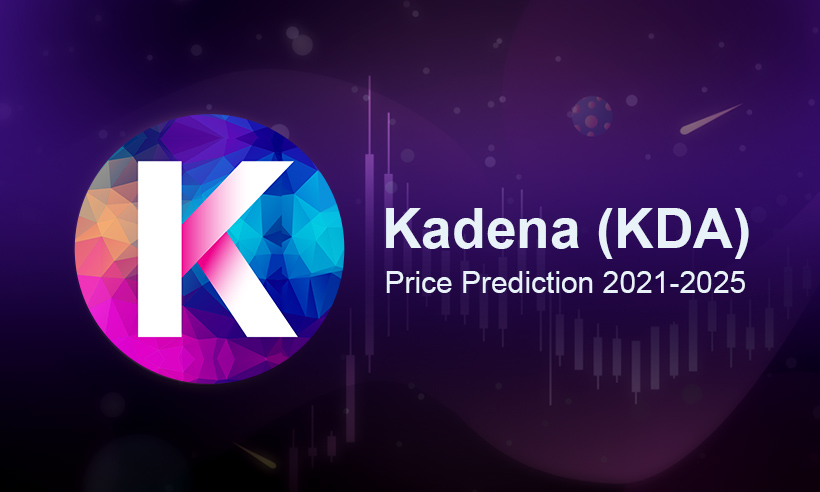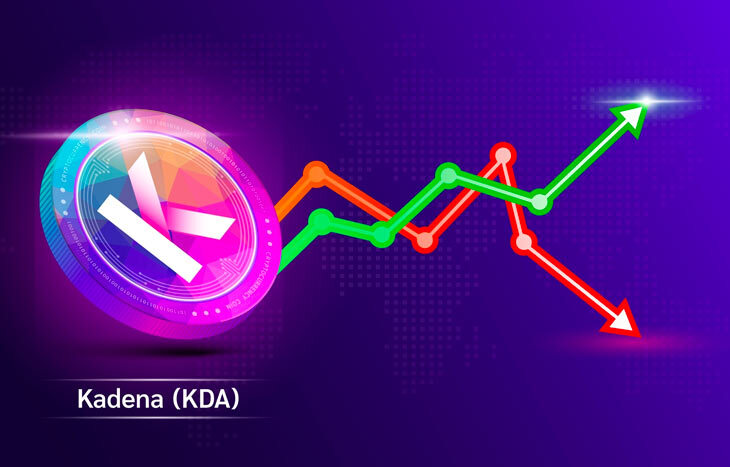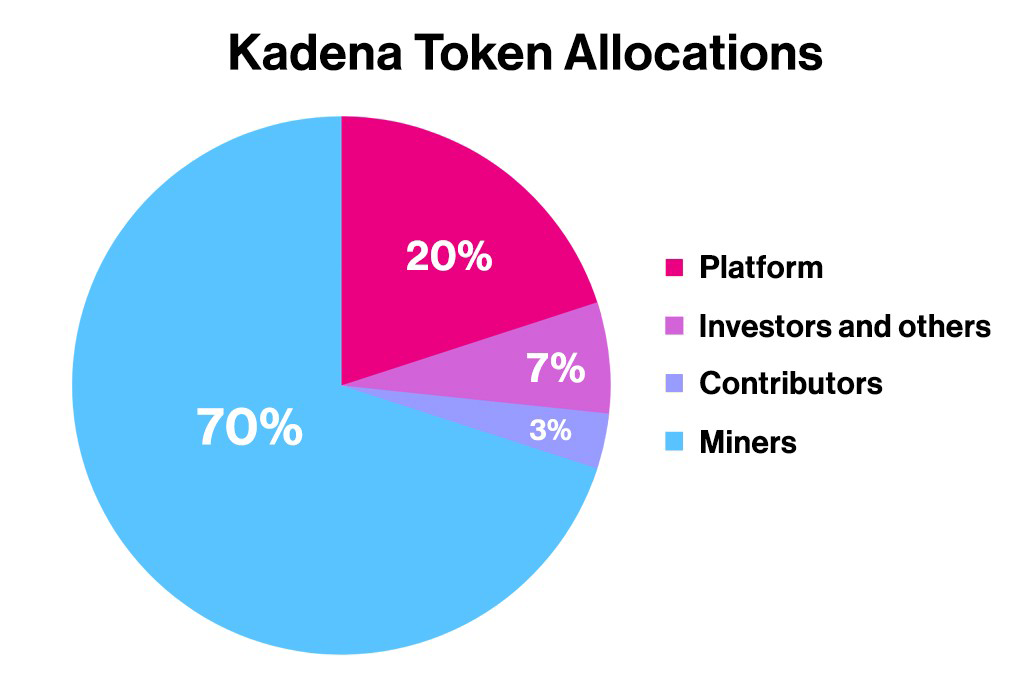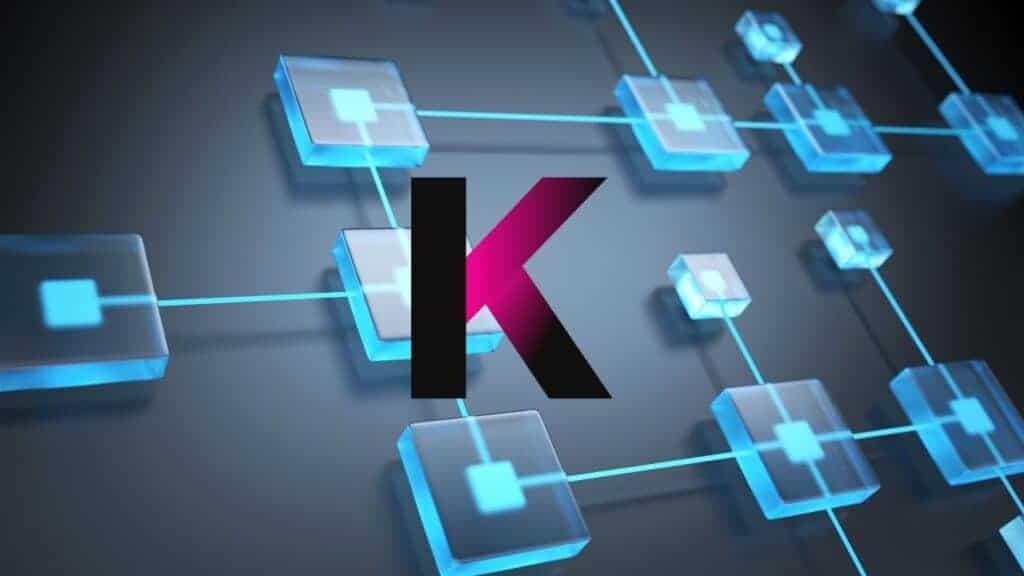Kadena and the KDA token
The Kadena network introduces new blockchain scaling solutions for Level 1 proof-of-work (PoW) blockchain, designed for both individual developers and enterprises.
As the only scalable hybrid consensus blockchain based on PoW, the Kadena blockchain ecosystem offers public and private networks. The Kadena crypto project is quickly becoming an industry leader, and the KDA token performs several important functions of the project and is vital to ensure that it is fully decentralized.
In this article, we will delve deeper into the Kadena cryptoecosystem and examine the fundamental structure of the Kadena blockchain network. In addition, we will look at the project’s new hybrid blockchain technology, and discuss the various KDA token utilities and options for corporate use of the Kadena crypto project.

What is Kadena?
Stuart Popejoy and Will Martino are the founders of Kadena, which launched a new hybrid blockchain model in January 2020. Kadena uses the traditional PoW consensus mechanism with a hashing algorithm to provide a scalable, fast and secure blockchain solution.
With blockchain development experience at JPMorgan Chase, Popejoy and Martino present Kadena as a solution to the shortcomings and limitations of the two largest cryptocurrencies and their blockchains at the moment, Bitcoin and Ethereum.
Kadena is the world’s first scalable proof-of-work (PoW) blockchain using sharding. The Kadena network itself operates on several intertwined blockchains. This includes a first-tier public network called “Chainweb” and a second-tier private network called “Kuro.” The third key element of Kadena is the open-source Pact programming language.
This hybrid blockchain technology, combined with the valuable expertise of the project team, makes Kadena a good choice for enterprise blockchain solutions. By its nature, the project offers a scalable, flexible, fast and smart contract compatible payment solution for businesses.
In 2018, the project raised $15 million in funding from 16 investors, including Susquehanna International Group (SIG) and INBlockchain (INB). According to CoinGecko, at the time of writing, Kadena had a market capitalization of $937 million.
Kadena is a hybrid blockchain technology
Kadena is a multi-chain network made up of multiple “bitcoin-like” chains. Initially, the Kadena network had ten chains at launch. However, the scalable infrastructure means that Kadena can add additional chains for infinite growth.
A multi-chain architecture increases throughput and security with additional chains. In 2020, Kadena grew from 10 to 20 networks, doubling the project’s capacity. The team plans to expand that number to 100 networks over the next year. With 100 active circuits, the team estimates that Kadena will be able to handle a total of one million TPS.
Kadena’s scalable hybrid blockchain infrastructure operates using a mechanism to asynchronously create multiple blocks in different peer-to-peer chains at the same height. In this way, the amount of hash power required to create each block is drastically reduced, which together with this increases the throughput of the network.
Chainweb (public network)
Chainweb is Kadena’s unique public proof-of-work (PoW) blockchain that uses a parallel-chain architecture to provide high throughput and scalability.
Chainweb’s fully scalable networks can run thousands of chains simultaneously, increasing throughput and maintaining security with each new chain added. In addition, Chainweb claims to be the only segmented and scalable Tier 1 PoW network.
In addition, Chainweb operates using competitive mining operations across multiple chains. In turn, this increases the resilience of the chains to attacks , reduces the competition and hashing speed for each chain, and eliminates the resulting energy footprint of the operations.
Chainweb is much more energy efficient than other single block proof-of-work (PoW) networks.

Kuro (private network)
The private network within the Kadena crypto project is called Kuro. Kuro is a second-tier network that developers can use to build and deploy scalable, secure and private decentralized applications (dApps).
Kuro is now a fully operational open source project, as community releases were initially available on the Microsoft Azure and Amazon Web Services (AWS) marketplace.
In 2020, the introduction of Kuro coincided with an update adding ten more circuits to the network. As a result, Kadena has become an industry-leading project, processing 480,000 transactions per second (TPS) across all circuits, surpassing Solana and being the world’s fastest blockchain, capable of processing up to 65,000 TPS.
Pact is a smart contract programming language
Pact is the programming language for smart contracts. Having been extensively tested in production-ready applications, Pact allows anyone with Microsoft Excel-level programming competence to create fully functional smart contracts and publish them directly to the blockchain.
The Kadena programming language simplifies contract updates, transaction logic, multi-signature capabilities, authorizing the latest security protocols, and error reporting. Pact also provides an efficient and functional balance of data management, authorization and workflow.
Using Pact, developers can build secure, high-bandwidth cross-network decentralized applications (dApps). In addition, developers can select and manage their individual approaches to interblockchain communications.
KDA token
The Kadena KDA native token has the same roles and functions as ETH in Ethereum. When using the Kadena platform and signing transactions that require computational gas, users can cover these costs with a KDA token.
In addition, miners on the Kadena blockchain receive a reward in KDA tokens with each block. Moreover, KDA token holders can bid on their assets and offer updates to the platform. This is available through the Kadena Decentralized Autonomous Organization (DAO).
The KDA token issuance schedule occurs by mining and issuing allocated tokens, and the total maximum supply of KDA tokens is one billion. There is a certain number of KDA tokens that have been minted during the launch of Genesis blocks. Genesis blocks are the first blocks that were mined, and from which the rest of the chains in the Kadena blockchain network were composed.
However, most (70%) of the KDA tokens are mining rewards for nodes on the network. In addition, the emission curve is designed to provide the infrastructure to scale. The annual reduction in mining bounty emissions is set at 100 years. This creates trust, stability and strong tokenomics for the KDA token. Tokens allocated to investors, contributors and the Kadena team (10%) have a five-year issuance schedule.

Kadena DAO
Kadena is hosting the first version of its decentralized autonomous organization (DAO) on its public blockchain. Kadena DAO is now available through “dao.init.” By performing two main functions, Kadena DAO allows the community to propose and vote on platform updates.
In addition, Kadena DAO wants its members to establish a decentralized process, so to speak, that can manage the addition of new features to the Kadena platform itself.
As an agile infrastructure, the Kadena DAO community has control and influence over the structure of the DAO. This includes the introduction of token design for betting and blockchain requirements for participation. The next update to Kadena DAO will be more community-driven, providing more power over the entire Kadena platform.
Before launching the main DAO network, Kadena considers community feedback on its functions, processes and overall infrastructure structure. Thus, through “dao.init” and “dao.forum,” Kadena DAO has two key parties; guardians and ambassadors. The guardians are the participants who can make and approve suggestions for updates.
Proposals can be absolutely anything from code and user interface (UI) tweaks to marketing, community and informational activities for the Kadena project. Furthermore, locking in 500,000 KDA tokens is the only requirement for submitting a proposal.
Ambassadors have the ability to collectively decide on the same or the same proposal. Furthermore, by majority vote, ambassadors have the right to freeze the entire Kadena DAO for seven days. In turn, any proposals submitted will expire, rendering the proposal invalid. Discussions of Kadena’s DAO updates are available in the “dao.init” forum. Trustees act as moderators and ambassadors are regular users.
Options for using Kadena Enterprise
Kadena’s multi-chain architecture can be applied in a variety of enterprise scenarios. For example, a global disease management company called Rymedi, is working in partnership with the U.S. Food and Drug Administration (FDA) to pilot the use of blockchain technology to create an application that collects health care data to extend patent protection.
Kadena is also working with alternative investment provider USCF to develop products on Kadena’s private network. According to co-founder Will Martino, UCFC believes that hybrid blockchain could be the basis for the next generation of exchange-traded funds (ETFs). Thus, it seems that Kadena’s technology is suitable for widespread enterprise adoption.

The bottom line
The Kadena cryptocurrency ecosystem is expanding rapidly, and enterprises large and small are adopting interoperable blockchain solutions offered by the project. Using new public and private hybrid blockchain technology, Kadena works with multiple intertwined blockchains.
Furthermore, as a smart contract interoperable network, Kadena offers developers a crosschain landscape for developing and deploying applications using the world’s first secure, scalable proof-of-work (PoW) Chainweb blockchain. In addition, Kadena offers Kuro, a Layer 2 private network intertwined with Chainweb.
The introduction of Kuro doubled Kadena’s throughput capacity, capable of 480,000 transactions per second (TPS), thereby earning it the title of the fastest blockchain in the industry.
In addition, Kadena hosts its own decentralized exchange (DEX), Kaddex. Kadena claims that Kaddex is a multi-chain protocol running on a single scalable proof-of-work (PoW) blockchain. It is the world’s first “truly decentralized DEX.”
Because the Kadena hybrid blockchain network operates with multiple interacting chains, each one requires the creation of a new account. This means that if users want to have the same account name in the network, they must be the first to register that name in all the chains individually.
Furthermore, it is worth noting that it is not the account name itself that determines ownership. Rather, it is the set of keys associated with the account. Thus, Kadena encourages users to pay attention to the chains in which they make transactions.
